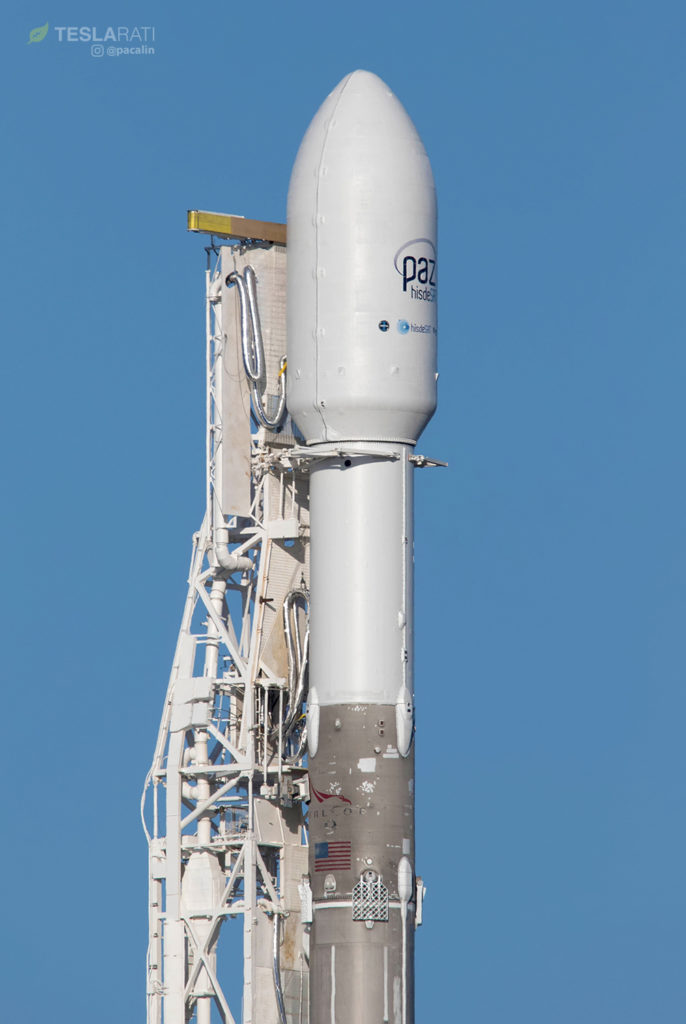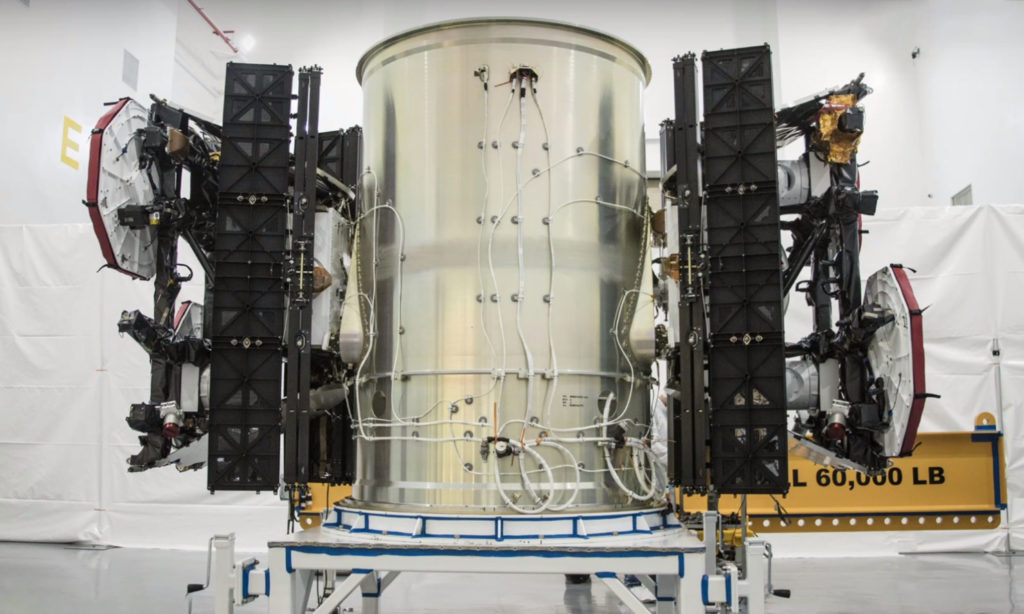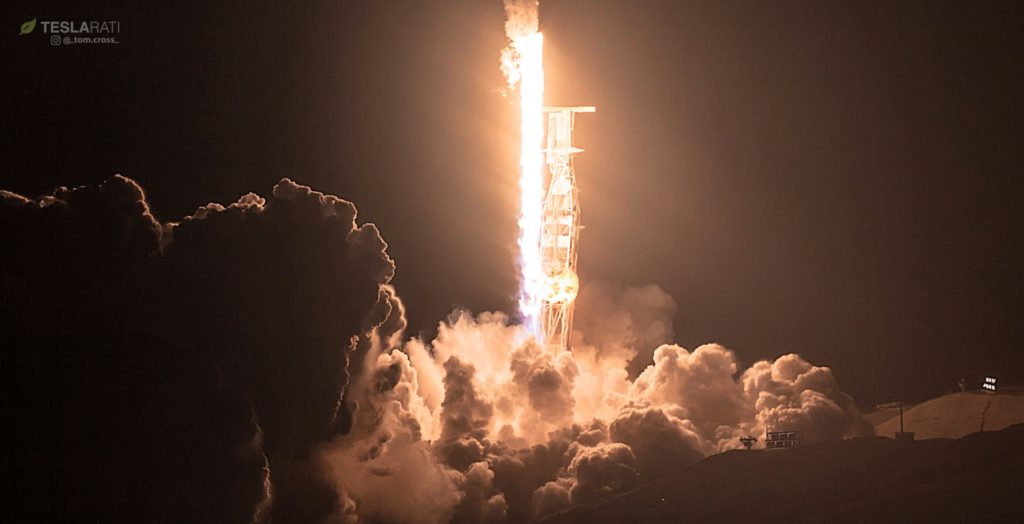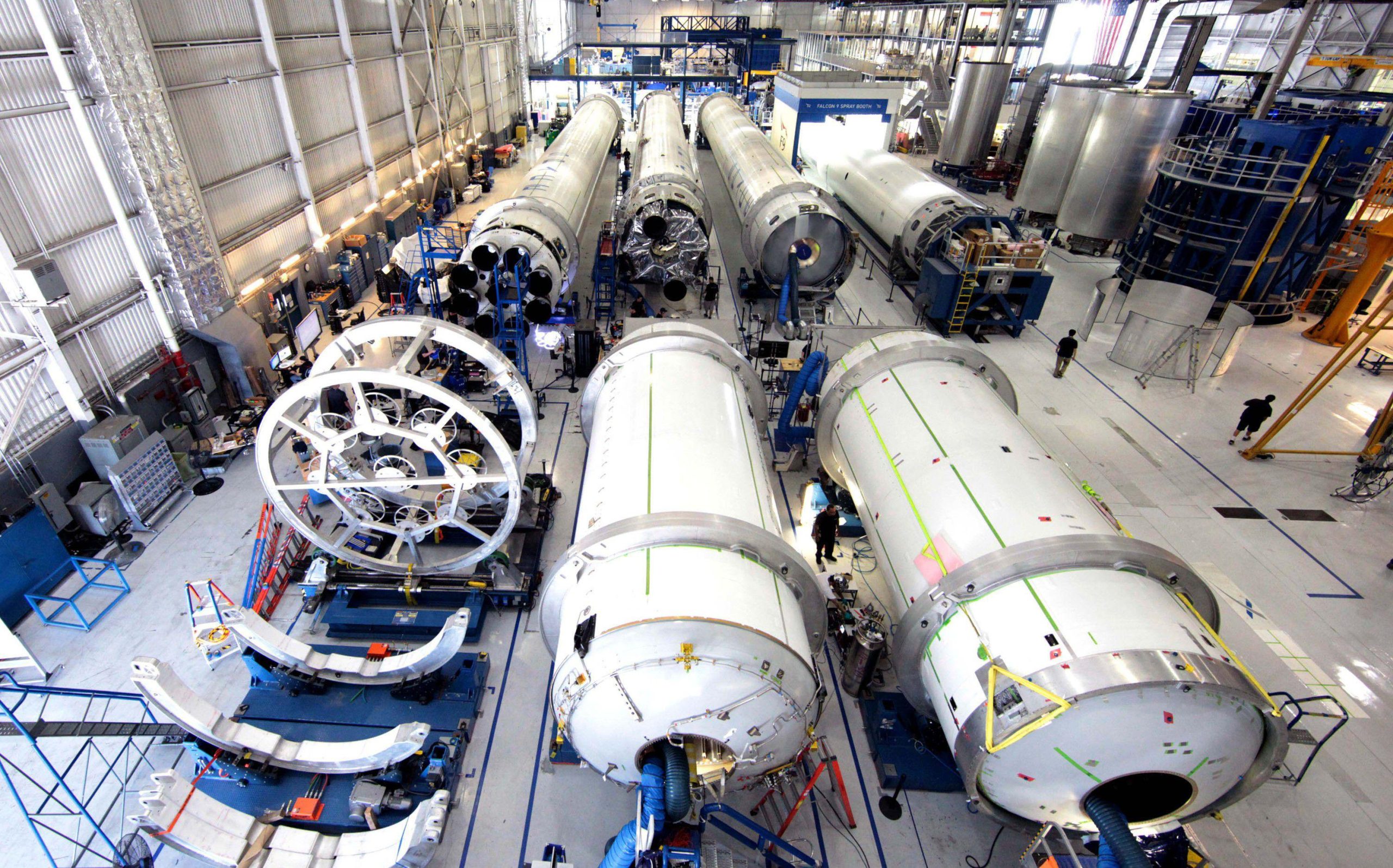
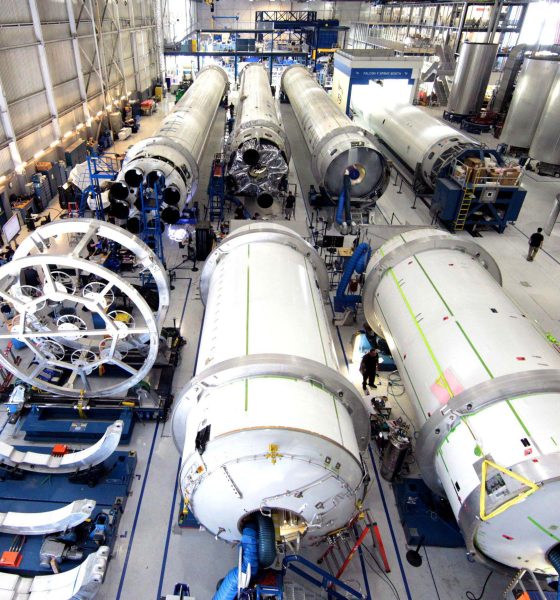
News
SpaceX to in-house mass production of Starlink internet satellite hardware
SpaceX is rapidly expanding it’s Starlink internet constellation development to prepare for full-scale production and aims to bring nearly every major piece of satellite and network hardware and software in-house, according to details revealed in dozens of job postings.
While not explicit, this appears to indicate a significant convergence of multiple possible paths to an operational constellation. Put simply, SpaceX now intends to build every single major component of its 4400+ satellite network in-house. It’s almost easier to list the things SpaceX does not mean to build themselves, but here’s a stab at the components to be built in-house: satellite structures, laser (optical) data interlinks, on-orbit phased array antennae, digital signal processor (DSPs) software and hardware to aim those antennae, solar arrays, battery systems, power electronics, custom integrated circuitry and systems on a chip (SoCs), user terminals and larger gateways, network operations, production automation, autonomous satellite constellation management, and much, much more.
Remote camera has been retrieved, wet with morning dew…and WITH images! Awesome launch by SpaceX. @teslarati #SpaceX #Paz #Starlink pic.twitter.com/tDTXxZErN4
— Pauline Acalin (@w00ki33) February 22, 2018
While entire articles could be spent describing the complexities of every single one of the above subsystems, the point is that SpaceX appears to have gone all-in on building its own satellite constellation, departing from stances in the past that appeared to leave room for subcontracting and outsourcing the production of major parts of the network, particularly with respect to ground terminals and gateways. Postings for ground station and user terminal engineers describe a goal of medium to high volume in-house production of the critical network and customer-facing hardware, and an entry into the production of high volume consumer technology would be a truly eclectic and unprecedented step for a company theoretically focused on launch vehicle development and production and sustainable Mars colonization.
If anything, they speak to the truly vertical nature of SpaceX. Many technology development production companies would simply accede and accept the best subcontractor/outsourcing bid when entering into new territory truly outside of their internal expertise. SpaceX engineers and managers, however, seem to have concluded that the vast majority of hardware and corporate expertise they could co-opt is just not satisfactory for the purpose of building a paradigm-shifting satellite constellation; or as CEO Elon Musk noted in 2015, to “revolutionize the satellite side of things, just as we’ve done with the rocket side of things.”
- SpaceX’s first Starlink prototypes launched in late February aboard a flight-proven Falcon 9 booster. (Pauline Acalin)
- SpaceX’s first two Starlink prototype satellites are pictured here before their inaugural Feb. 2018 launch, showing off a utilitarian design. (SpaceX)
- Falcon 9 roars into the dark California sky with PAZ and Starlink. (Pauline Acalin)
This new (and, in retrospect, unsurprising) trailblazing attitude also helps to explain the marginal delay to Musk’s original 2015 schedule, which estimated initial constellation operations (i.e. a few hundred satellites launched) would begin around 2020. Approximately a year later, SpaceX had built rough prototypes in the form of the original Microsat 1A and 1B twins. This initial foray into independent, long-term communications smallsats was shuttered fairly quickly, and neither of the demo satellites were launched. Instead, SpaceX dove back into prototype design and development, culminating roughly two years later with the March 2018 launch of two dramatically improved prototypes, known as Tintin A and B (or Microsats 2A and 2B in FCC licenses).
It seems probable that the source of this delay lay in an internal decision to dramatically reconfigure the internet constellation for far more in-house development, whereas the original Microsats were likely pieced together from a range of components derived from SpaceX’s Cargo Dragon program or more simply from commercial off-the-shelf (COTS) offerings. Instead, SpaceX’s Starlink development offices in Redmond, Washington and throughout California are staffed with as many as 400 to 500 employees dedicated in large part to the nascent program, similar (if not larger) in scale to OneWeb, the only noteworthy satellite internet competitor at present.
If SpaceX’s decision to push back Starlink’s operational debut by a few years in order to bring in-house almost every single critical subcomponent of Starlink pays off, the company could begin launching finalized satellites en masse as early as late 2019/early 2020, with a goal of offering limited service by 2021 per comments made by CEO Elon Musk. Starlink is likely being brought almost entirely in-house because Musk or other high-level executives and engineers see major room for improvement, improvements that could lower the cost of and improve the performance of lightweight communications satellites by an order of magnitude.

A flight-proven Falcon 9 prepares for launch in May 2018. SpaceX will likely launch at least one more pair of Starlink demo satellites from the West coast later this year (Pauline Acalin)
It will likely take a bit longer than initially expected, but SpaceX may yet still pave their path to Mars colonization with profits derived from a wildly successful and disruptive entrance into the broadband market.

News
Elon Musk’s Grokipedia surges to 5.6M articles, almost 79% of English Wikipedia
The explosive growth marks a major milestone for the AI-powered online encyclopedia, which was launched by Elon Musk’s xAI just months ago.

Elon Musk’s Grokipedia has grown to an impressive 5,615,201 articles as of today, closing in on 79% of the English Wikipedia’s current total of 7,119,376 articles.
The explosive growth marks a major milestone for the AI-powered online encyclopedia, which was launched by Elon Musk’s xAI just months ago. Needless to say, it would only be a matter of time before Grokipedia exceeds English Wikipedia in sheer volume.
Grokipedia’s rapid growth
xAI’s vision for Grokipedia emphasizes neutrality, while Grok’s reasoning capabilities allow for fast drafting and fact-checking. When Elon Musk announced the initiative in late September 2025, he noted that Grokipedia would be an improvement to Wikipedia because it would be designed to avoid bias.
At the time, Musk noted that Grokipedia “is a necessary step towards the xAI goal of understanding the Universe.”
Grokipedia was launched in late October, and while xAI was careful to list it only as Version 0.1 at the time, the online encyclopedia immediately earned praise. Wikipedia co-founder Larry Sanger highlighted the project’s innovative approach, noting how it leverages AI to fill knowledge gaps and enable rapid updates. Netizens also observed how Grokipedia tends to present articles in a more objective manner compared to Wikipedia, which is edited by humans.
Elon Musk’s ambitious plans
With 5,615,201 total articles, Grokipedia has now grown to almost 79% of English Wikipedia’s article base. This is incredibly quick, though Grokipedia remains text-only for now. xAI, for its part, has now updated the online encyclopedia’s iteration to v0.2.
Elon Musk has shared bold ideas for Grokipedia, including sending a record of the entire knowledge base to space as part of xAI’s mission to preserve and expand human understanding. At some point, Musk stated that Grokipedia will be renamed to Encyclopedia Galactica, and it will be sent to the cosmos.
“When Grokipedia is good enough (long way to go), we will change the name to Encyclopedia Galactica. It will be an open source distillation of all knowledge, including audio, images and video. Join xAI to help build the sci-fi version of the Library of Alexandria!” Musk wrote, adding in a later post that “Copies will be etched in stone and sent to the Moon, Mars and beyond. This time, it will not be lost.”
News
Tesla Model 3 becomes Netherlands’ best-selling used EV in 2025
More than one in ten second-hand electric cars sold in the country last year was a Tesla Model 3.

The Tesla Model 3 became the most popular used electric car in the Netherlands in 2025, cementing its dominance well beyond the country’s new-car market.
After years at the top of Dutch EV sales charts, the Model 3 now leads the country’s second-hand EV market by a wide margin, as record used-car purchases pushed electric vehicles further into the mainstream.
Model 3 takes a commanding lead
The Netherlands recorded more than 2.1 million used car sales last year, the highest level on record. Of those, roughly 4.8%, or about 102,000 vehicles, were electric. Within that growing segment, the Tesla Model 3 stood far ahead of its competitors.
In 2025 alone, 11,338 used Model 3s changed hands, giving the car an 11.1% share of the country’s entire used EV market. That means more than one in ten second-hand electric cars sold in the country last year was a Tesla Model 3, Auto Week Netherlands reported. The scale of its lead is striking: the gap between the Model 3 and the second-place finisher, the Volkswagen ID3, is more than 6,700 vehicles.
Rivals trail as residual values shape rankings
The Volkswagen ID.3 ranked a distant second, with 4,595 used units sold and a 4.5% market share. Close behind was the Audi e-tron, which placed third with 4,236 registrations. As noted by Auto Week Netherlands, relatively low residual values likely boosted the e-tron’s appeal in the used market, despite its higher original price.
Other strong performers included the Kia Niro, the Tesla Model Y, and the Hyundai Kona, highlighting continued demand for compact and midsize electric vehicles with proven range and reliability. No other model, however, came close to matching the Model 3’s scale or market presence.
News
Tesla Model Y Standard Long Range RWD launches in Europe
The update was announced by Tesla Europe & Middle East in a post on its official social media account on X.

Tesla has expanded the Model Y lineup in Europe with the introduction of the Standard Long Range RWD variant, which offers an impressive 657 km of WLTP range.
The update was announced by Tesla Europe & Middle East in a post on its official social media account on X.
Model Y Standard Long Range RWD Details
Tesla Europe & Middle East highlighted some of the Model Y Standard Long Range RWD’s most notable specs, from its 657 km of WLTP range to its 2,118 liters of cargo volume. More importantly, Tesla also noted that the newly released variant only consumes 12.7 kWh per 100 km, making it the most efficient Model Y to date.
The Model Y Standard provides a lower entry point for consumers who wish to enter the Tesla ecosystem at the lowest possible price. While the Model 3 Standard is still more affordable, some consumers might prefer the Model Y Standard due to its larger size and crossover form factor. The fact that the Model Y Standard is equipped with Tesla’s AI4 computer also makes it ready for FSD’s eventual rollout to the region.
Top Gear’s Model Y Standard review
Top Gear‘s recent review of the Tesla Model Y Standard highlighted some of the vehicle’s most notable features, such as its impressive real-world range, stellar infotainment system, and spacious interior. As per the publication, the Model Y Standard still retains a lot of what makes Tesla’s vehicles well-rounded, even if it’s been equipped with a simplified interior.
Top Gear compared the Model Y Standard to its rivals in the same segment. “The introduction of the Standard trim brings the Model Y in line with the entry price of most of its closest competition. In fact, it’s actually cheaper than a Peugeot e-3008 and costs £5k less than an entry-level Audi Q4 e-tron. It also makes the Ford Mustang Mach-E look a little short with its higher entry price and worse range,” the publication wrote.
